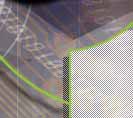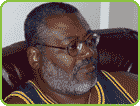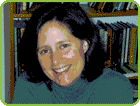
|
|||||
Curricula
Action Toolkit

a project of Media Working Group
Curricula
Authors
Samuel D. Henry
Girls and Women in STEM Careers: A Curricular Statement
 |
One particular launching point of this curriculum is emergent from my own history: my mother, Shendrine E. Boyce. Henry, was a pioneer Black woman chemist in the early 1950s, and along with her 20 year career as a high school science teacher at Mc Kinley Tech in Washington DC, this witness to the challenges of her career have informed, if not formed, many of my endeavors. In the late 1990s, shortly before my mother’s death, I recall a conversation with my uncle Felix, who shared with me that just prior to my mother’s engagement to my father he had been present when my grandfather had spoken emphatically and passionately about the need for my mother to marry someone who would be supportive of her choice of a career in the sciences. My grandfather had clearly been a mentor, and an integral part of Mom’s career choices; he expected that her decision on a marriage partner would also actively support her work in the sciences. After gaining a perspective of the depth of my father’s support, he consented to the marriage. As I watched The Gender Chip Project for the first time, I was reminded of the essential role that spouses, families and other close-in support plays in the opening of doors to women in the sciences in our society as well as advancing the continuing choices of young women in life decision-making.
Curriculum design issues, if I may paraphrase one of my mentors, Dwayne Huebner, are not only always political in the sense of access to knowledge being about power, but they are also personal—deeply rooted in relationships. In creating this curriculum, we tried to be mindful of this personal and communal dimension of curricular design along with the continuum of age, development and interest. We also intended that this curriculum piece would help play a catalytic role for girls and women’s mentors from different institutions and positions in life. While research on risk and resiliency informs us of the importance of at least two adults needed to mentor each child, we are operating here with the belief that as many positive messages as possible be provided to support the choice of STEM (science, math, engineering and technology) careers. We hope that these mentors will use these materials and develop their own materials to open up the external environment for career choices, while they also deepen the inner spaces where reflection and refraction can challenge social norms and prescriptions —including those societal subtext perspectives about how things should be.
This curriculum guide is dedicated to the memory of my mother, and to the present work with my teen daughter; looking toward the kind of experience-based mentoring that creates the critical and informed spaces for possibility and positive life choices for girls and women.
Samuel D. Henry, Ed. D.
Portland State University
Portland, Oregon
Wendi Laurence
 |
I come from four generations of teachers and so I got to grow up in an atmosphere where teaching was not work, rather teaching and learning are a life that is led. My Mom constantly makes curiosity possible. Things can be touched, explored, mucked around in and messed up. As a kid, I had no idea that I was always learning and she was also continually teaching and learning -- I just thought we were having adventures. I keep a photo on my desk of my Mom and our boys, in the picture they are blowing bubbles and looking at them through the light streaming in our front window. The boys bounced, asked questions, touched, laughed, made a mess and had a blast. That photo exemplifies the childhood I remember and I am so glad our boys get to do the same.
It is in this spirit that I offer what I have written. It is about the possibility that comes from engaging in learning. It is about the belief that it makes a difference when someone reaches out and shares in learning and dreams. It is about my understanding that sometimes someone went ahead and asked me the difficult questions, offered me tools and connections and then gave me the space to find my answers.
My contribution to this work is defined by the two sides of the bridge I am currently building. I am forever glad to be one of Mom's kids -- my brother and I -- and all of her kids that she learned with during her forty-two years as a classroom teacher. So I dedicate this to my Mom, Barbara Bain, for always believing in me, learning and the dream of teaching. On the other side of the bridge I would like to thank Bill Becker, Director of the Center for Science Education, for the rope he threw me when I didn't know how to connect my vision with the reality of education. I am grateful that both are willing not just to offer advice but have been just crazy enough to mentor me and to muck around and do the real work that comes with dream construction. Jim, Connor and Kelton live the dream with me each day and I am glad they believe that our future is based on what Connor has termed "creat-osity". I hope some of the work in here offers what I have learned in the process of trying to create my dream and helps people connect with young women who need chances to learn, muck around, dream and be asked the difficult questions so they can build their own bridges.
Have fun out there,
Wendi Laurence, M.A.
Portland State University
Portland, Oregon
